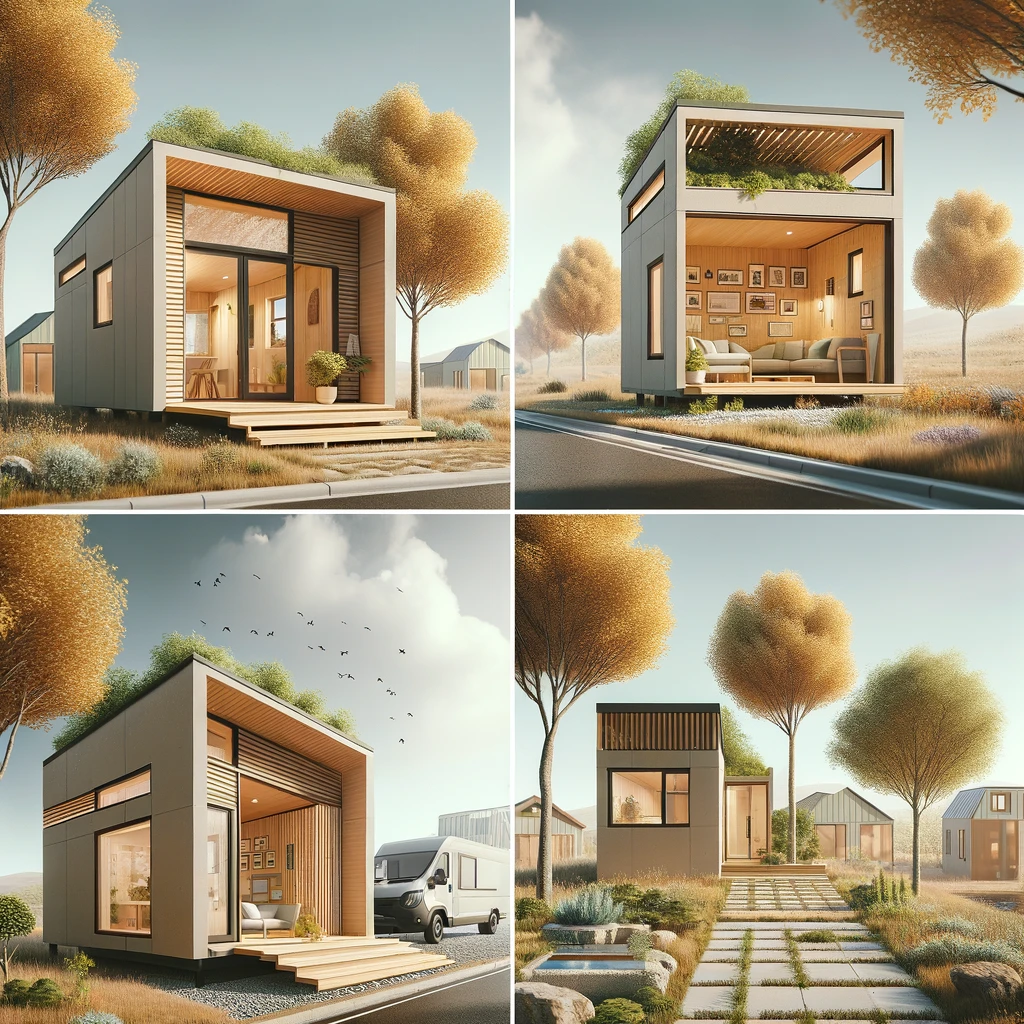
Designing a tiny house for a hot and dry climate, such as one would find under the abundant sun of a desert or arid region, poses unique challenges and opportunities. The primary goal is to create a living space that remains cool and comfortable without relying excessively on air conditioning, which can be costly and unsustainable. This requires careful consideration of materials, orientation, insulation, and natural cooling strategies.
One of the first considerations in designing a tiny house for a hot, dry environment is the orientation relative to the sun. The house should be positioned to minimize sun exposure during the hottest parts of the day. This often means orienting the longest side of the house to face north and south, reducing the amount of direct sunlight that strikes the east and west facing walls during sunrise and sunset, which are typically the hottest parts of the day. Strategic placement of windows is crucial; smaller windows on the east and west sides can reduce heat gain, while larger windows or glass doors facing north can allow natural light without the heat of direct sunlight.
Material selection is also vital in a hot, dry climate. Materials with high thermal mass, such as concrete or adobe, can absorb heat during the day and release it slowly at night, helping to regulate interior temperatures without mechanical intervention. However, the use of these materials needs to be balanced with good insulation to prevent heat from penetrating into the interior during the day. Exterior reflective materials or light-colored paints can reflect the sun’s energy away from the house, further aiding in keeping the interior cool.
Insulation is a critical component, and it must be suitable for the climate. In hot, dry areas, radiant barriers in the roofing or reflective foil insulations are often recommended. These materials reflect heat rather than absorbing it, significantly reducing the amount of heat that transfers into the home. Proper insulation in the walls and floors is also essential to maintain a comfortable indoor environment.
Natural ventilation is a key strategy in cooling a tiny house effectively. Designing for cross ventilation can help draw cooler air through the house if windows and doors are positioned opposite each other. This natural airflow can significantly reduce indoor temperatures and improve air quality without relying on air conditioning. Additionally, using evaporative coolers, which add moisture to the air while cooling it, can be an effective and energy-efficient cooling method in dry climates.
Incorporating shading elements is another effective way to control heat. Large overhangs, awnings, and pergolas not only provide shade but also add to the aesthetic value of the tiny house. Vegetation plays a role here as well; planting deciduous trees on the south and west sides of the house can provide natural shade during the hottest months and allow sunlight through during cooler months when leaves fall.
Finally, water features, such as small fountains or ponds near the house, can improve the microclimate around the building. The evaporation of water helps cool the air, creating a more comfortable outdoor living space, which is a valuable extension of a tiny home’s living area.
Designing a tiny house for a hot, dry climate involves a holistic approach that combines traditional architectural wisdom with modern technology. The result is a sustainable, energy-efficient home that stays naturally cooler in the harsh sun, making it a comfortable and eco-friendly dwelling.
Here is an image showcasing tiny house designs optimized for hot, dry climates. The visuals highlight various sustainable and energy-efficient features such as light-colored exterior walls, large overhangs for shade, strategically placed windows for cross ventilation, and natural landscaping that includes deciduous trees and a small water feature to aid in cooling. These elements combine to create a living environment that remains comfortable even in harsh climates.